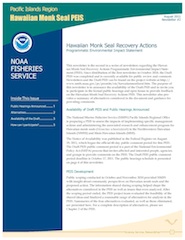Media Watch, The Lairds of Learning, by George Monbiot, The Guardian, 29 August 2011
 Editor’s Note: Despite oft-reapeated calls for monk seal conservation and science to find a wider public audience — thereby spurring efforts to save the species and its habitat — most research continues to be published in closed access “subscription-only” scientific journals with a limited circulation. In view of this issue’s importance to the survival of the Mediterranean and Hawaiian monk seal, we take this opportunity of drawing our readers’ attention to the following article, “The Lairds of Learning”.
Editor’s Note: Despite oft-reapeated calls for monk seal conservation and science to find a wider public audience — thereby spurring efforts to save the species and its habitat — most research continues to be published in closed access “subscription-only” scientific journals with a limited circulation. In view of this issue’s importance to the survival of the Mediterranean and Hawaiian monk seal, we take this opportunity of drawing our readers’ attention to the following article, “The Lairds of Learning”.
[…] Reading a single article published by one of Elsevier’s journals will cost you $31.50(1). Springer charges Eur34.95(2), Wiley-Blackwell, $42(3). Read ten and you pay ten times. And the journals retain perpetual copyright. You want to read a letter printed in 1981? That’ll be $31.50(4).
Of course, you could go into the library (if it still exists). But they too have been hit by cosmic fees. The average cost of an annual subscription to a chemistry journal is $3,792(5). Some journals cost $10,000 a year or more to stock. The most expensive I’ve seen, Elsevier’s Biochimica et Biophysica Acta, is $20,930(6). Though academic libraries have been frantically cutting subscriptions to make ends meet, journals now consume 65% of their budgets(7), which means they have had to reduce the number of books they buy. Journal fees account for a significant component of universities’ costs, which are being passed to their students. […]
Source: The Lairds of Learning, by George Monbiot, The Guardian, 29 August 2011.

 NOAA. 2011. Hawaiian monk seal recovery actions. Programmatic environmental impact statement. NOAA Fisheries, Pacific Islands Region. August 2011, Newsletter # 2: 1-6. [
NOAA. 2011. Hawaiian monk seal recovery actions. Programmatic environmental impact statement. NOAA Fisheries, Pacific Islands Region. August 2011, Newsletter # 2: 1-6. [